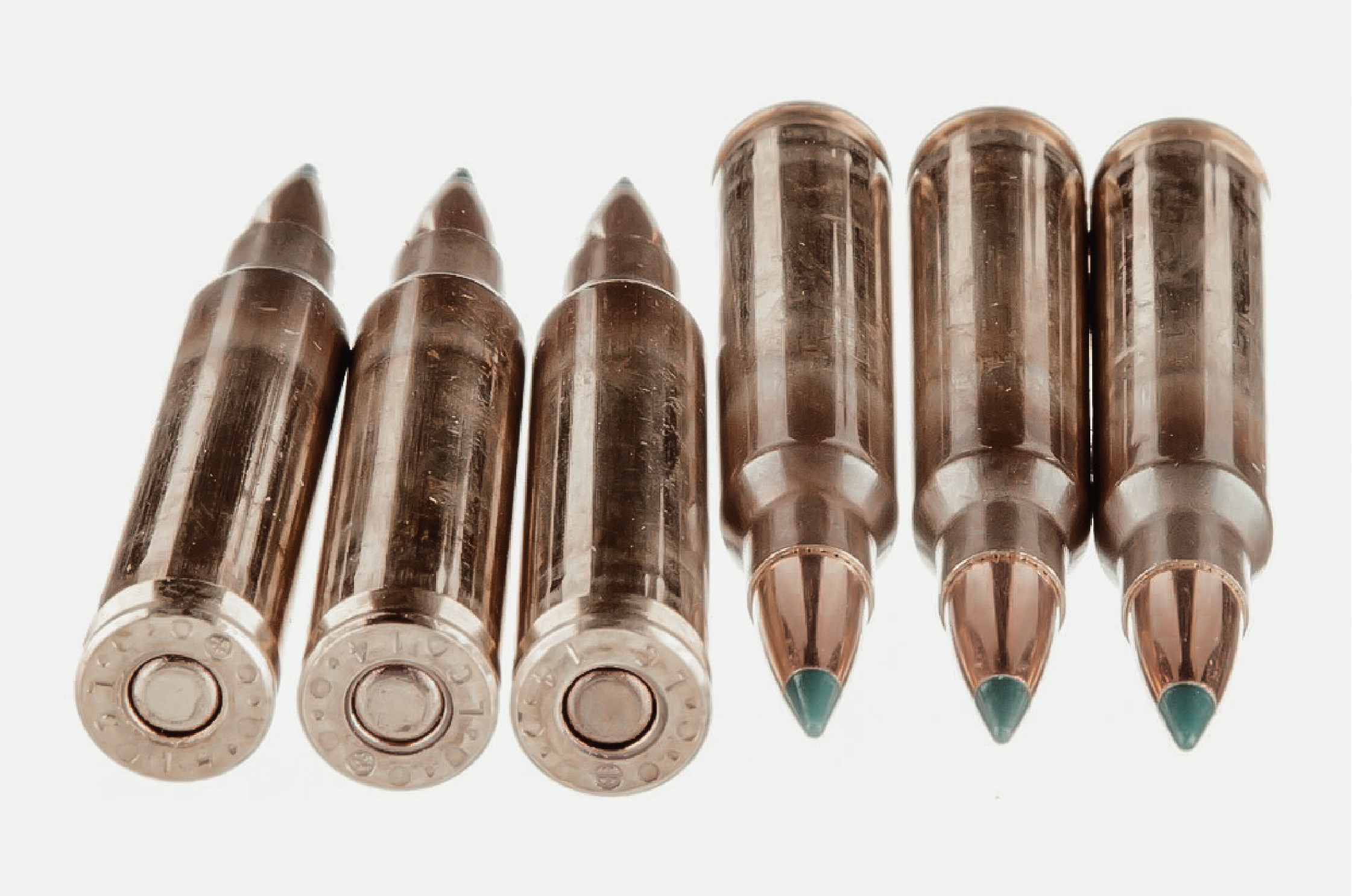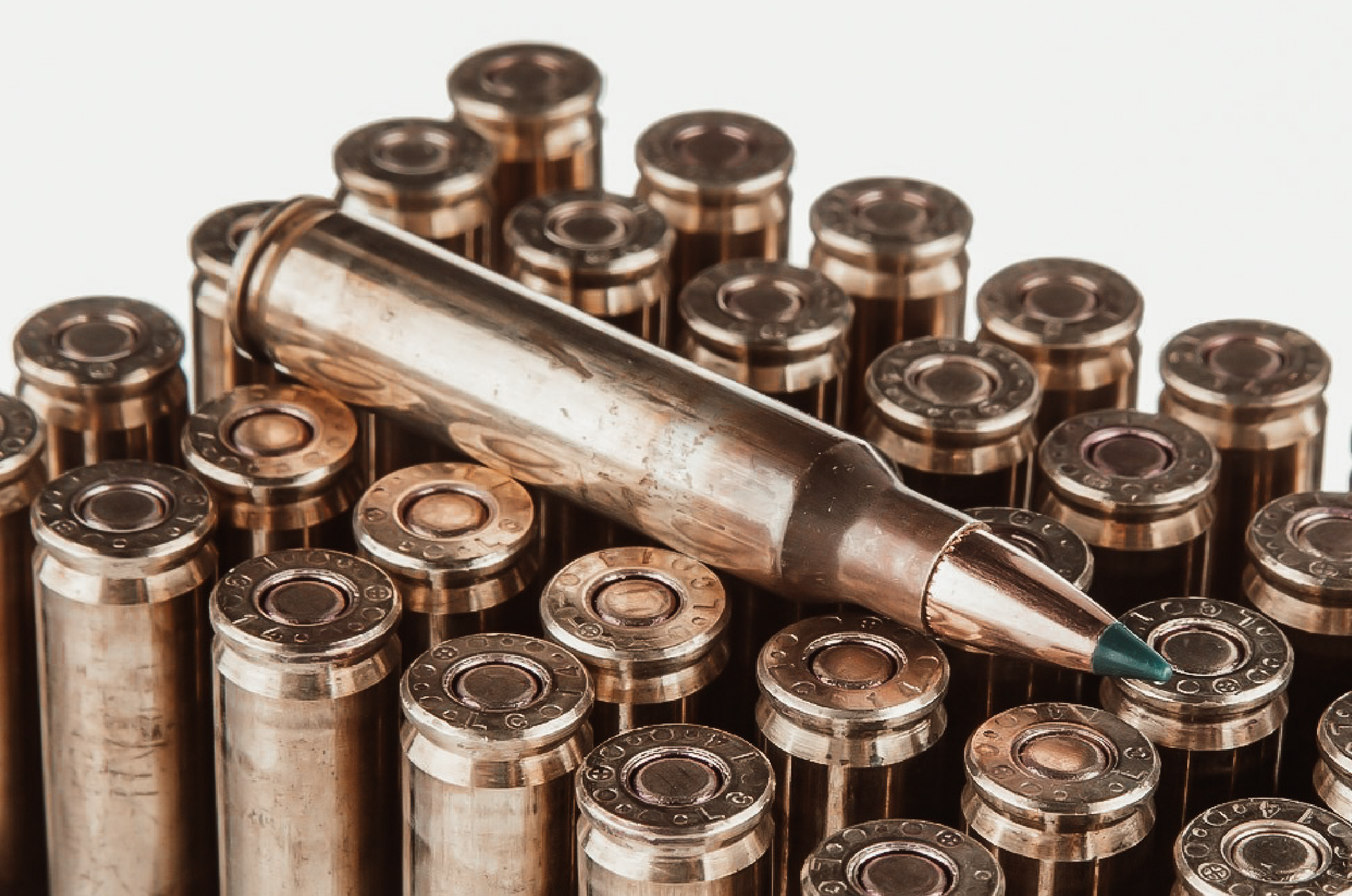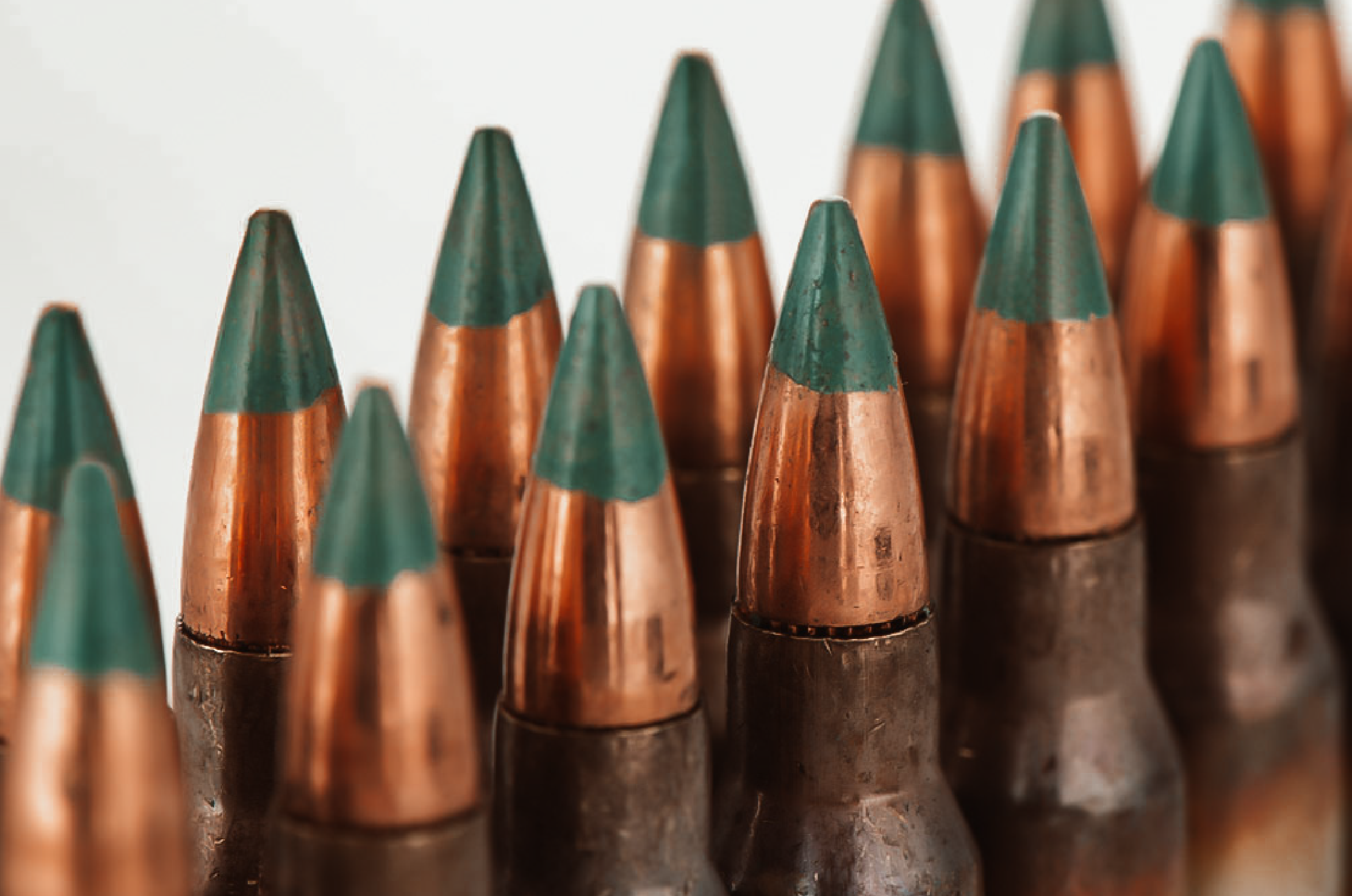458 SOCOM vs. 5.56: Big Bore Ballistics in a Standard AR-15
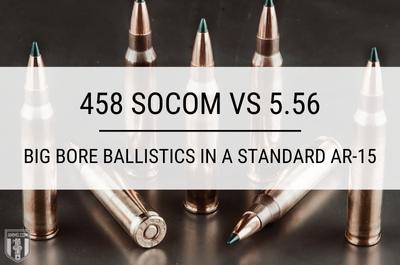 The standard AR-15 chambered in 5.56 NATO truly is America’s rifle: a symbol of our ingenuity and freedom.
The standard AR-15 chambered in 5.56 NATO truly is America’s rifle: a symbol of our ingenuity and freedom.
Although the 5.56 NATO has proven itself in the jungles of Vietnam and deserts of Iraq, some gun owners wanted something more. Specifically, they wanted more stopping power, better terminal ballistics, and a rifle cartridge that could be used for both home defense and big game hunting.
The 458 SOCOM cartridge is the "more" those gun owners were looking for, as its heavier bullets deliver bone-crushing kinetic energy that can stop feral hogs and whitetail deer dead in their tracks.
Is investing in a big bore 458 SOCOM upper receiver really worth it? Or is it better to stick with the AR-15 platform's tried and true 5.56 NATO? This article covers the 458 vs 556 debate so you can answer those questions for yourself.
What is the difference between 5.56 and 458 SOCOM?
The primary differences between 458 SOCOM vs. 556 are the bullet diameter each cartridge fires and their intended engagement ranges. The 458 SOCOM's 0.458” diameter bullet is designed for close-range engagements, whereas the 5.56's 0.224” diameter bullet excels over longer distances.
A Note on Nomenclature
Within this article we refer to the 223 Remington (223 Rem) and the 5.56x45mm NATO rounds interchangeably. There are minor differences between the rounds despite this. You can read about them here: .223 vs 5.56 In short, a 223 Rem can be safely fired from a firearm chambered in 5.56, although the opposite isn't true.
Cartridge Specs
When evaluating centerfire rifle cartridges, it’s a good idea to scrutinize their physical specifications first.
The most striking difference between these two cartridges are their bullets. The 5.56 fires a 0.224” diameter bullet, whereas the 458 SOCOM fires a massive 0.458” diameter bullet. This directly affects the bullet weights each cartridge can fire. The 458 SOCOM cartridge typically fires bullets weighing between 250 and 600 grains, with 300 grains being the most popular. In contrast, the 5.56 fires 35 to 77 grain bullets, with 55 and 62 grains being most popular.
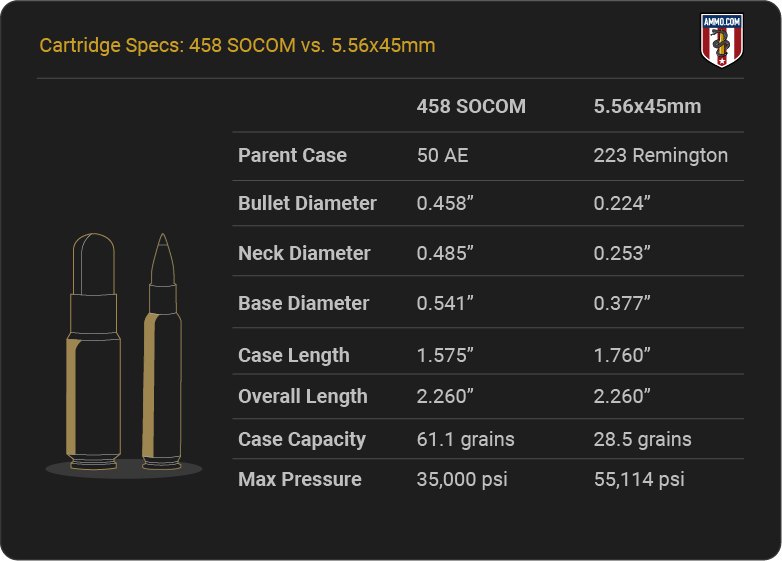
Another striking difference between the two rifle cartridges are their case length and width. The 5.56 round is thinner and longer, with a base diameter of 0.377” and case length of 1.76”. The 458 SOCOM is considerably wider, with a 0.541” base diameter (but with a shorter 1.575” case.
Both the 458 SOCOM and the 5.56 have the same overall length of 2.26&rdquo. This is not by coincidence, as the 458 SOCOM was specifically designed to fit into existing AR-15 magazines.
As the 458 SOCOM descended from the mighty 50 Action Express (i.e. the most powerful cartridge the Desert Eagle handgun is chambered for), it's unsurprising that it has a distinct case capacity advantage over the 5.56. The 458 SOCOM cartridge has over double the case capacity: 61.1 grains H20, as opposed to 28.5. The 458 SOCOM's capacious case is needed to hold the large, powerful charge of proepllant requisite for launching its heavy bullets.
The final major difference between the two rifle cartridges are their maximum pressures. The 5.56 can handle significantly higher chamber pressures compared to the 458 SOCOM, as the 5.56 fires a smaller bullet at higher velocity. The maximum chamber pressure for the 5.56 is established as 55,114 psi –towering compared to 35,000 psi for 458 SOCOM.
Recoil
Recoil is an important consideration when purchasing a new rifle as a round with heavy recoil will be more difficult to control and slow your rate of follow up shots. It is determined by muzzle velocity (measured in feet per second, or fps), propellant charge weight, bullet weight, and rifle weight.
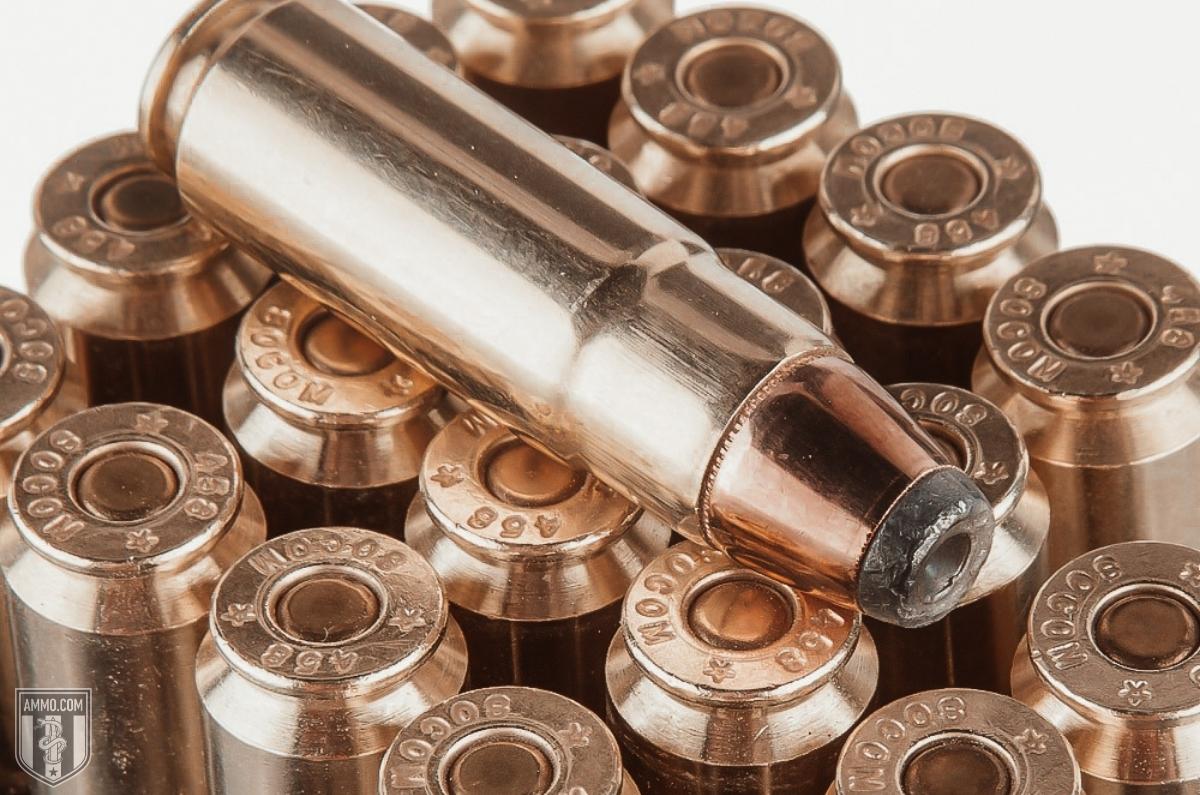
The 5.56 NATO is highly regarded for being a low-recoil round. It averages around 4 ft-lbs of free recoil energy – a kiss on the cheek compared to a whopping 23 ft-lbs for the 458. That’s more than five times recoil. To put this in perspective, the 458 SOCOM only has about 4 ft-lbs less free recoil than a 12 Gauge shotgun shell.
Since the 458 (A) fires projectiles that can be over five times heavier and (B) contains around twice as much propellant, it’s unsurprising that it generates considerably more recoil than the 5.56.
Muzzle Velocity and Kinetic Energy
When it comes to muzzle velocity, only a handful of rounds that are faster than the 5.56 NATO. However, the 5.56 cannot hold a candle to the 458 SOCOM in terms of muzzle energy.
For this example, we will compare Hornady Frontier 5.56x45 55 grain FMJ M193 and SBR 458 SOCOM 300 grain TTSX ammunition.
At the muzzle, the 5.56 bullet is blazing downrange at 3,240 fps – zippy compared to 1,835 fps for the 458. Although this is only one example, essentially every 5.56 factory load has a higher muzzle velocity than the 458 SOCOM.
However fast the 5.56 bullet might be, the 458 SOCOM's considerably heavier bullet conserves a lot more energy. At the muzzle, the 458 SOCOM bullet possesses 2,243 ft-lbs of energy – downright nuclear compared to 1,282 ft-lbs for the 5.56.
Although the 458 SOCOM has almost double the muzzle energy, the round quickly loses velocity and momentum as it travels downrange. By 300 yards, the wide 300 grain bullet has gone subsonic. By 600, it only carries about 500 ft-lbs of energy.
The 458 SOCOM was designed for close-range shots, and uses its massive kinetic energy advantage to devastating effect at self-defense distances. The 5.56 can hardly be considered weak at close range, although its narrower and higher-velocity bullet is very clearly designed for combat over the longer distnaces characteristic of battlefields.
Trajectory
Trajectory is how we quantify a bullet’s flight path as it travels downrange, measured in inches of bullet drop.
A cartridge with a flatter trajectory is preferred for long-range shooting, as it lets a shooter get away with making fewer adjustments to their optics to compensate for bullet drop. A flatter trajectory also means a cartridge will be more forgiving of ranging mistakes.
The 5.56's higher velocity and narrower, more aerodynamic bullet utterly dominate the 458 SOCOM in terms of trajectory.
Assuming a 100-yard zero, the Hornady M193 clone mentioned earlier will exhibit -11.5” bullet drop at 300 yards; very little compared to -46.8” for a conventional 300 grain 458 SOCOM load. That’s more than four times difference between the two cartridges.
When it comes to trajectory and long-range shooting, the 5.56 is clearly the better option.
Ballistic Coefficient
Ballistic coefficient (BC) is a measure of how well a bullet resists wind drift and air resistance. Put another way, it’s a numeric representation of how aerodynamic a bullet is. A high BC is preferred as this means the bullet will conserve a higher percentage of its momentum, as well as overcome wind deflection more effectively.
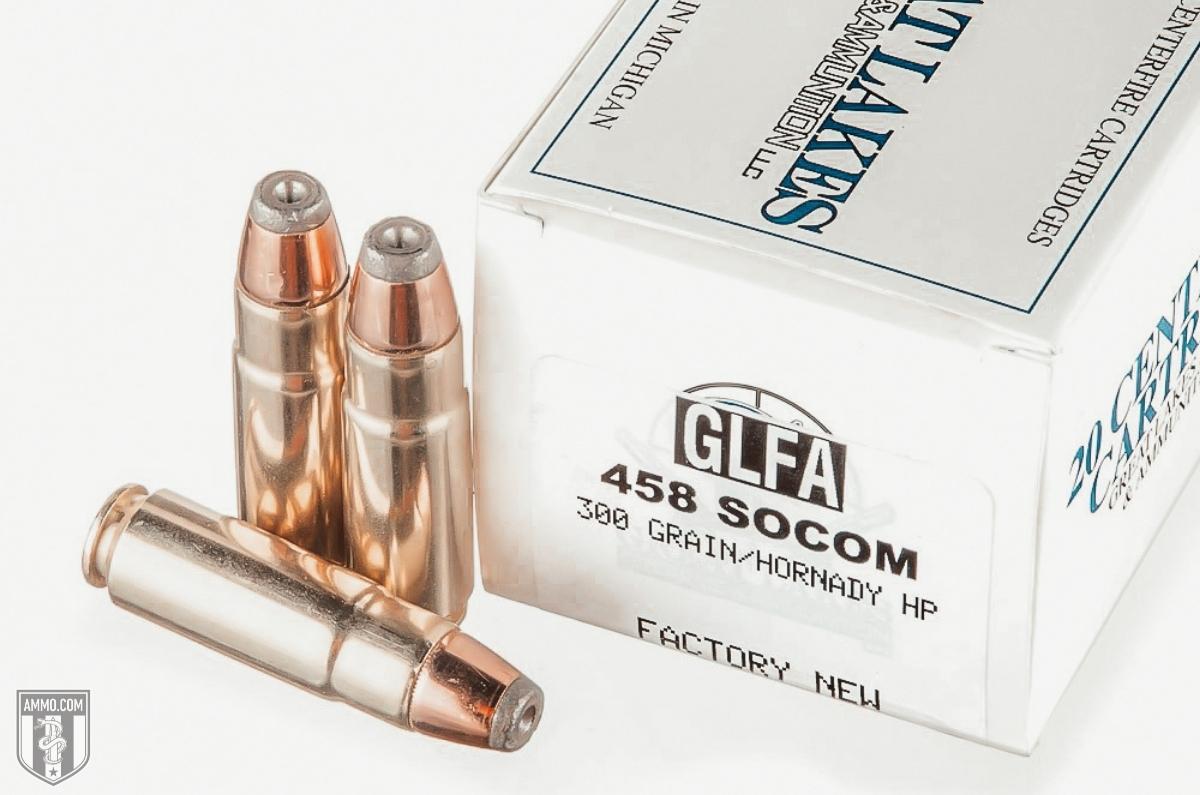
BC varies from bullet to bullet based on design, weight, and other factors that are beyond the scope of this article. With that said, heavier bullets generally do have higher BCs, as it takes relatively more force to disrupt their flight paths.
As the 458 SOCOM fires considerably heavier bullets than the 5.56, it would be easy to assume the 458 would decimate the 5.56 in terms of BC. However, this is not the case, and the two bullets are similar in terms of their ballistic coefficients.
One major issue with the 458 SOCOM is its bullet design. The cartridge is constricted by the standard AR-15 magazine's 2.26” overall length requirement, hence why its bullet must be so short and wide relative to that of the 5.56.
The Hornady 5.56 NATO 55 grain bullet has a BC of 0.243, while the 458 300 grain TTSX has a BC of 0.236. Higher ballistic coefficient values for either round can be achieved by firing heavier bullets. For example, a 5.56 grain ELD Match has a BC of 0.398, whereas a 458 500 grain TSX has a BC of 0.412.
Although outliers occur at extreme variations in bullet weight, the 5.56 and 458 SOCOM are roughly equal in terms of ballistic coefficient.
Sectional Density
Sectional Density (SD) is the measure of how efficiently a bullet penetrates a target. This is extremely important when hunting large and medium game, as you need a bullet that can punch through thick hide, bone, and sinew.

Sectional density is a product of two variables: bullet weight, and bullet diameter. The higher its SD, the more capable of deep penetration the bullet becomes. (This is a simplified view of penetration, as there are other factors to consider such as expansion and velocity. For example, the 458 SOCOM excels at penetration due in part to its heavyweight bullet's superior momentum.)
The 458 SOCOM 300 grain bullet has an SD of 0.204, whereas the 5.56 55 grain bullet has an SD of 0.157.
SD for 5.56 can be increased by using a heavier bullet. A 73 grain bullet has an SD of 0.208. The 5.56 can't beat the 458 when it comes to SD, however. The 458's heaviest bullets' SDs usually exceed 0.300.
In summary, the 458's bullets are both wider and heavier than those of the 5.56. These two factors determine SD – hence the 458's characteristically superior penetration capabilities.
Hunting
In terms of hunting, both rifle cartridges excel in their respective areas of expertise.
The 5.56 NATO/223 Rem is an awesome choice for varmint hunting, as its flatter trajectory makes it a great choice for longer-range shots. However, the 5.56 lacks the kinetic energy needed to ethically harvest medium to large game like whitetail. Many states and provinces prohibit the use of 0.224” diameter bullets for deer hunting for this very reason.
This is where the 458 SOCOM really shines, as it conserves more than enough kinetic energy to dispatch a whitetail with relative ease. The 458 is also a favorite among hog hunters who love the semi-auto capability of the AR-15 for its quicker follow-up shots when engaging multiple targets.
The 458 SOCOM is a big bore cartridge that delivers crippling kinetic energy that can take down an elk or even a black bear within 100 yards or a whitetail within 200 yards. For longer-range shots beyond 200 yards, the 458 will lack the kinetic energy needed to ensure a clean harvest on game. Something like 308 Winchester or 30-06 Springfield is preferable for hunting over long distances.
For the varmint hunter, the 5.56 NATO clearly the better choice. But if you want to hunt anything larger than coyote, the 458 SOCOM is the better option within 200 yards.
SBR and Suppressor Integration
One of the massive benefits of the 458 SOCOM cartridge is its optimization for use in a short-barreled rifle (SBR) with or without a suppressor. The 458 is designed to exhibit a full powder burn in a 9.5” barrel (meaning that a longer barrel does not increase muzzle velocity). In fact, Marty ter Weeme, the designer of the 458 SOCOM cartridge, does not recommend using a barrel longer than 16” for the round.
The 458 SOCOM is designed for use with a suppressor. Heavier loads (i.e. 500+ grains) are subsonic by nature, making the 458 safer for hearing when fired throug a suppressor (much like the subsonic 300 Blackout). Many 458 barrels have a 1:14 rate of twist, although a faster 1:10 twist rate may be necessary to stabilize heavier bullets in barrels shorter than 10”.
The 5.56 was initially designed with the 20” barrel of the Colt M16 rifle in mind. Although the M4 carbine has proven extremely effective in combat, the 5.56's terminal ballistics often suffer in an SBR. Furthermore, the direct gas impingement (DGI) system on the AR-15 in conjunction with high-pressure 5.56 ammo doesn’t always jive with a suppressor. Shooters often get gas blow back in their faces/eyes when using firing suppressed 5.56 rifles.
With all this in mind, the 458 SOCOM makes for an extremely potent home defense option as it is ideal for use with a suppressor and SBR. An AR-15 in 458 makes for an incredibly compact, maneuverable, and hard-hitting self-defense package – just as it was designed to be.
Ammo and Rifle Cost/Availability
The 5.56 NATO cannot be beat in terms of ammo availability and price.
Virtually every ammo manufacturer has multiple factory loads for both 223 Rem and 5.56 NATO. As this is the frontline cartridge used by the U.S. military, a plethora of surplus ammo options are also.
The popularity of 5.56 really helps keep prices down and supply up. You can find 223/5.56 ammo anywhere ammunition is sold.
Comparably few manufacturers offer 458 SOCOM. Underwood, SBR Ammunition, and Buffalo Bore are the three major manufacturers that have embraced the 458 SOCOM, and have several factory loads to cover most of your shooting needs.
Inexpensive FMJ 5.56 ammo costs around $0.60/round. Match-grade ammo usually runs around the tune of $1.50/round and higher.
The 458 SOCOM lacks the widespread popularity of the 5.56. As such, it is considerably more expensive. The cheapest 458 FMJ ammo starts at around $2/round, while premium Ballistic Tip or hollow point hunting rounds start at $3.50 per and go up from there.
For high-volume shooting and plinking, the 5.56 is undeniably the better option.
Buying in bulk is always smart! Be sure to check out our stock of 5.56 bulk ammo.
The AR-15 is the most popular semi-automatic rifle platform in North America. Its most popular chambering is unquestionably 5.56x45mm NATO. The AR-15 can easily be converted to fire 458 SOCOM with a barrel and bolt swap. Standard AR-15 mags can be used for 458 SOCOM without any modification as well. However, as the 458 is considerably wider than the 5.56, it will effectively transform what had been a 30-round mag into a 10-round one.
When looking for a bolt-action 5.56 rifle, you’ll quickly discover that most of them are chambered in 223 Rem and not 5.56. It is not safe to fire 5.56 ammo in a 223 rifle (as explained in this article. Several bolt-action 5.56 rifles are available, however, including the Ruger American Ranch, the Ruger Gunsite Scout, and Mossberg MVP Patrol.
Major gun manufacturers do not currently produce 458 SOCOM rifles. It is possible to have a custom rifle built in 458 SOCOM, although that would be an expensive undertaking. Unless you're wealthy, you're limited to firing 458 SOCOM in an AR.

Reloading
When it comes to 5.56 NATO and 458 SOCOM, reloading is one option that many shooters utilize to reduce their cost per round.
As inexpensive brass, powder, and bullets are easy to find for 5.56, it is a cartridge that many handloaders enjoy reloading in bulk.
Note that reloading dies specific to the 5.56 NATO are unavailable. Since the 223 Remington is dimensionally identical to the 5.56, only its dies are available.
Although the 458 SOCOM is a relatively new cartridge, major reloading companies like Lee Precision, RCBS, and Redding offer 458 SOCOM dies. Sourcing brass and bullets is another matter, as 0.458” is a somewhat uncommon bullet diameter. Hornady, Barnes, and Sierra offer .458 caliber bullets. Cases for 458 SOCOM are also more expensive and harder to source than 5.56.
Although it is generally more expensive to reload 458 SOCOM than 5.56, the cost savings from handloading your own 458 ammo is a real boon to those who love plinking.
5.56 NATO Ballistics
Note: This information comes from ammo manufacturers. Actual ballistics obtained with your firearm can vary considerably from the advertised ballistics. Also, ballistics can vary from lot to lot with the same brand and type load.
| 5.56x45mm Bullet Weight | Velocity (fps) | Energy (ft-lbs) | Trajectory (in.) | |||||||||||
|---|---|---|---|---|---|---|---|---|---|---|---|---|---|---|
| Muzzle | 100 yds. | 200 yds. | 300 yds. | 400 yds. | Muzzle | 100 yds. | 200 yds. | 300 yds. | 400 yds. | 100 yds. | 200 yds. | 300 yds. | 400 yds. | |
| 55 Grain | 3130 | 2740 | 2382 | 2051 | 1750 | 1196 | 917 | 693 | 514 | 372 | 1.1 | 0 | -7.3 | -23 |
| 75 Grain | 2910 | 2676 | 2543 | 2242 | 2041 | 1410 | 1192 | 1002 | 837 | 693 | 1.2 | 0 | -7 | -21 |
A Brief History of 458 SOCOM
In 1993, U.S. special operations forces were dispatched to Mogadishu, Somalia during the Somali Civil War in an effort to capture Mohamed Farrah Aidid. Aidid was wanted in connection to attacks made on UN peacekeeping forces in 1992.
President Bill Clinton ordered the formation of Task Force Ranger, a combination of Army Rangers and Delta Force operators, after two bombing attacks on U.S. military assets in Somalia. Codenamed Operation: Gothic Serpent, the joint task force was ordered to hunt down Aidid and his lieutenants and capture them. This culminated in the Battle of Mogadishu, and was the basis for the movie Black Hawk Down.
Task Force Ranger was armed with Colt M16 rifles as well as M4 carbines loaded with 62 grain M855 ammo. Many special operations operators reported subpar performance of the round in combat, citing the need for multiple shots to take down an enemy combatant. This was partly due to Somali fighters' habit of chewing "khat," a drug known to increase pain tolerance.
The 458 SOCOM was developed in response to a conversation (supposedly at a barbecue) between Marty ter Weeme of Teppo Jutsu LLC and a member of the special operations community who served in Task Force Ranger. Their goal was to create a big bore cartridge for the AR-15 that could stop an attacker in a single shot.
The 450 Bushmaster was initially considered for the program; however, the 450 Bushmaster round was quickly eliminated from further consideration as a bottleneck cartridge was needed for improved feeding under combat conditions.

Marty ter Weeme and Tony Rumore of Tromix finally settled on an elongated 50 Action Express (AE) case necked down to accept a .458 caliber bullet as the final design for the 458 SOCOM. The rim diameter of the 50 AE case was also reduced from 0.514” to 0.473” so it would be compatible with bolt-action rifles. For reference, the 30-06 Springfield has the same rim diameter as the 458 SOCOM.
Tromix was contracted to make the first 458 SOCOM rifle in February, 2001.
Capable of firing a 300 grain bullet at 1,900 fps with 2,400 ft-lbs muzzle energy, the 458 SOCOM represents a massive upgrade in stopping power over standard 5.56 ammo.
The 458 SOCOM is 100% compatible with the AR-15 platform's springs and mags. Conversion to 458 only requires replacing the barrel, bolt, and gas block. Many shooters simply have a dedicated upper receiver to quickly switch between 5.56 and 458 SOCOM.
The 458 has not received the widespread acceptance of other thumper rounds like the 450 Bushmaster. Even so, 458 SOCOM enthusiasts love the ability to quickly switch between supersonic and subsonic rounds by simply changing ammo. Hog hunters especially love the round for its power and fast follow-up shot capability.
A Brief History of 5.56 NATO
After the Korean War, the U.S. Military started designing a new rifle cartridge for its frontline service rifles. The 308 Winchester (7.62x51mm NATO) was adopted to fill this role in 1954.
Following early engagements in Vietnam, the U.S. Army wanted a new rifle that fired a lighter, intermediate cartridge – something like the AK-47. This would allow soldiers to carry more ammo into battle without forfeiting effective terminal ballistics.
This was the beginning of the 223 Remington.
Development of the 223 Rem rifle round began in 1957. The final design was submitted by Remington Arms to the Sporting Arms and Ammunition Manufacturers' Institute (SAAMI) in 1962.
The development of the 223 Remington cartridge was a joint operation organized by the U.S. Continental Army Command between Fairchild Industries, Remington Arms, and Eugene Stoner of Armalite, using the 222 Remington as a parent cartridge.
The original 223 Rem mil-spec ammo that the U.S. Military adopted was designated "M193," which fires a 55 grain full metal jacket (FMJ) bullet at a muzzle velocity of 3,260 fps with a muzzle energy of 1,294 ft-lbs.
The M193 cartridge served the U.S. Army all the way through Vietnam. However, Fabrique Nationale (FN) Herstal changed the game several years later. In 1980, the Belgian firearms and cartridge manufacturer submitted their designs for the 5.56x45mm SS109 cartridge to NATO for approval. The SS109 fires a 62 grain FMJ bullet with a steel penetrator tip at 3,110 fps, and has a muzzle energy of 1,325 ft-lbs.
The U.S. Military designation for the 5.56mm NATO SS109 is "M855."
The newer 5.56mm NATO cartridge has identical external dimensions to the 223 Remington. However, the NATO cartridge can handle a slightly higher maximum pressure.
The adoption of the SS109 round has come under some criticism due to battlefield reports of the ineffectiveness of its stopping power, accuracy, and effective range. This has led to several advancements in 5.56mm NATO ammunition.
One of the biggest criticisms of the SS109 cartridge was its inability to yaw (tumble) and fragment. The M193 was well known for tumbling and fragmenting upon entry into soft tissue, causing additional damage to itsw target.
The Mk 262 was the next iteration of the 5.56mm NATO round. It fires a 77 grain open tip match (OTM) bullet designed for the United States Navy Mk 12 MOD 0/1/H Special Purpose Rifle (SPR). Special Forces became fond of the MK 262 round as it offered better terminal ballistics in M4 carbines than what was observed with the SS109 rounds. However, the Mk 262 was not adopted for widespread use due to the increased cost of its heavier OTM bullets.
The Mk 318 was the next evolution of the 5.56mm NATO cartridge. It used an open tip design to facilitate soft tissue damage, and a solid brass penetrator base for added barrier penetration. This allows it to be employed against targets with or without body armor. The Mk 318 fragments immediately following impact, and is not dependent on bullet yaw (tumbling) like the M193 and M855.
The most recent iteration of the 5.56mm NATO round is the M855A1. The M855A1 was developed because the U.S. Military wanted to go “greener” and move away from lead-core bullets.
The M855A1 proved to have several distinct advantages over traditional M855. It is slightly more accurate, provides improved terminal ballistics and wounding capacity, and exhibits superior barrier penetration.
The M855A1 fires a 62 grain FMJ bullet with a solid copper core and steel penetrator tip extending past the jacket and has been in service since 2010.
To read more about 5.56 NATO, check out the full history of the cartridge on our 5.56 NATO history page.
If you’d like to learn more about how the 5.56 compares to other cartridges, check out these articles:
Final Shots: 458 SOCOM vs 5.56x45
The 5.56 NATO is one of the most popular centerfire rounds in the world as it offers military, law enforcement, and civilian shooters a low-recoil cartridge with a flat trajectory and an effective range of around 500 yards.
However, the 5.56 is not without its shortcomings, as many combat veterans critique the round for its low stopping power, claiming it to be insufficient for modern combat situations.
The 458 SOCOM is one answer to this issue. With almost double the kinetic energy at the muzzle compared to the 5.56, the 458 SOCOM is extremely potent in short-range combat or hunting scenarios – but lacks the long range capability of the 5.56.
Picking the right cartridge for your AR-15 rifle primarily depends on your intended use.
Most shooters will opt for the 5.56, as its low ammunition cost and wide variety of rifles help them spend more time on the range without breaking the bank.
However, if you want to hunt hogs – or need a potent cartridge for home defense – then the 458 SOCOM is an excellent option.
Regardless of which cartridge you choose, make sure you get all your ammunition here at Ammo.com and get out to the range so you are always ready to defend freedom!
Ammo Comparisons
- .308 vs 5.56
- 6.5 Creedmoor vs .308
- .300 Blackout vs .308
- .300 Win Mag vs .308
- .243 vs .308
- .308 vs .30-06
- 7mm-08 vs .308
- .270 vs .308
- 7.62x39 vs .308
- .223 vs .308
- .338 Lapua vs .308
- .380 ACP vs 9mm
- .223 vs 5.56
- .300 Blackout vs 5.56
- 9mm vs 45 ACP
- 9mm vs 40 S&W
- .357 SIG vs 9mm
- 10mm vs 9mm
- 9mm vs 9mm Luger
- .243 vs .270
- .300 Win Mag vs .30-06
- .270 vs .30-06
- .40 vs .45
- 38 Special vs 357
- 9mm vs 40 vs 45
- 5.56 vs 7.62x39
- 338 Lapua vs .30-06
- .30-30 vs .30-06
- 300 PRC vs 338 Lapua
- .30-06 vs 7mm
- 300 Win Mag vs 338 Lapua
- 300 PRC vs 300 Win Mag
- 300 WSM vs 300 Win Mag
- 338 Win Mag vs 338 Lapua
- 12 Gauge vs 20 Gauge
- 10mm vs 357 Mag
- .30-30 vs 7.62x39
- 224 Valkyrie vs 22-250
- 17 HMR vs 22 Mag
- 7.62x39 vs .300 Blackout
- 45 ACP vs 45 Auto
- 45-70 vs 30-30
- 300 Blackout vs 223
- 357 Magnum vs 9mm
- 350 Legend vs 300 Blackout
- 224 Valkyrie vs 223
- 45 ACP vs 38 Super
- 6.5 Grendel vs .308
- 17 HMR vs 22 LR
- 10 Gauge vs 12 Gauge
- 22-250 vs 223
- 45 Colt vs 45 ACP
- 350 Legend vs 30-30
- 5.7x28 vs 223
- 5.7 vs 9mm
- 5.56 vs 5.7
- 22 vs 9mm
- Buckshot vs Birdshot
- 450 Bushmaster vs 308
- 450 Bushmaster vs 223
- Buckshot vs Slug
- 6.5 Grendel vs 5.56 vs 223
- 6mm ARC vs 6.5 Grendel
- 44 vs 45
- 458 SOCOM vs 5.56
- 357 vs 44
- 32 ACP vs 380
- 300 Win Mag vs 338 Win Mag vs 338 Lapua Mag
- 450 Bushmaster vs 458 SOCOM vs 50 Beowulf
- 6mm Creedmoor vs 6.5 Creedmoor
- TMJ vs FMJ
- 44 Special Vs 44 Magnum
- 45 90 vs 45 70
- 6.8 Western vs 6.8 SPC
- 50 Beowulf vs 50 BMG
- 26 Nosler vs 6.5 PRC
- 28 Gauge vs 410
- 6.8 SPC vs 5.56
- 6.8 SPC vs 6.5 Grendel
- 6.8 Western vs 7mm Rem Mag vs .28 Nosler
- 6.8 Western vs 6.5 Creedmoor
- 22 Hornet vs 223
- 6.8 Western vs 6.5 PRC
- .410 vs 12 Gauge
- .410 vs 20 Gauge
- 22 LR vs 22 Mag
- 6mm ARC vs 243
- 7mm-08 vs 270
- 243 vs 6.5 Creedmoor
- Nickel vs Brass Casing
- 204 Ruger vs 223
- 50 Beowulf vs 5.56
- 260 Remington vs 6.5 Creedmoor
- 6mm Remington vs 243
- 28 Nosler vs 300 PRC
- 50 Beowulf vs 50 AE
- 22 Nosler vs 22-250
- 450 Marlin vs 45-70
- 300 Win Mag vs 300 Norma
- 458 SOCOM vs 300 Blackout
- 38-55 vs 45-70
- 22 Hornet vs 22 LR
- 300 Norma vs 338 Lapua
- 338 Lapua vs 50 BMG
- 28 Nosler vs 300 Win Mag
- 28 Nosler vs 6.5 Creedmoor
- 204 vs 22-250
- 458 SOCOM vs 45 70
- 44 40 vs 45 70
- 6.8 SPC vs 6.5 Creedmoor
- 450 Bushmaster vs 30-06
- 7mm Rem Mag vs 300 Win Mag
- 30 Carbine vs 223
- 25-06 vs 30-06
- 26 Nosler vs 28 Nosler
- 16ga vs 12ga
- 30 06 vs 7.62 x54R
- 9mm Makarov vs 9mm Luger
- 350 Legend vs 223
- 30 Carbine vs 5.56
- 6.5x55 vs 6.5 Creedmoor
- 6.5 Creedmoor vs 270 vs 25-06
- M193 vs M855
- 450 Bushmaster vs 458 SOCOM
- 6.5 Grendel vs 6.5 Creedmoor
- 350 Legend vs 5.56
- .277 Fury vs 6.8 SPC
- 277 Fury vs 300 Win Mag
- 10mm vs .45 ACP
- 277 Fury vs 223
- 6.8 SPC vs 300 Blackout
- 6.5 PRC vs 6.5 Creedmoor
- 277 Fury vs 308
- 277 Fury vs 6.5 Creedmoor
- 350 Legend vs 450 Bushmaster
- 277 Fury Vs 5.56 NATO
- 10mm vs 40S&W
- 32 ACP vs 9mm
- 32 Special vs 9mm
- 8.6 Blackout vs 300 Blackout
- 30 Super Carry vs. 9mm
- 5.56 vs 9mm
- .50 Action Express vs 9mm
- 7.62x25 vs. 9mm
- 10mm vs 44 Magnum
- 300 Blackout vs 300 Win Mag
- 6.5 Grendel vs 300 Blackout
- 460 Rowland vs 10mm
- 300 RUM vs 300 PRC
- 300 Norma vs 300 PRC
- 45 GAP vs 45 ACP
- 7mm PRC vs 300 Win Mag
- 300 PRC vs 6.5 Creedmoor
- 300 PRC vs 308
- 357 SIG vs 357 Mag
- 7.62x39 vs 7.62x51
- 243 Win vs 223 Rem
- 30 Nosler vs 300 PRC
- 6.5 Creedmoor vs. 30-06 Springfield
- 450 S&W vs. 44 Magnum
- 6.5 Creedmoor vs. 300 Win Mag
- 454 Cassull vs. 45-70 Govt
- 454 Cassull vs. 44 Mag
- 7.62x54r vs. 308 Winchester
- 22 ARC vs. 223 Rem
- Subsonic vs. Supersonic Ammo
